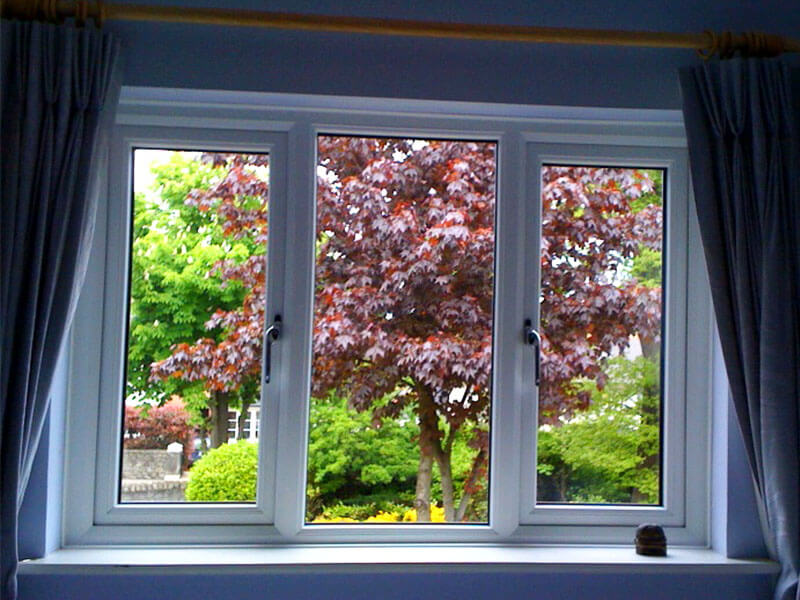Double glazing has long been recognized as an effective method for improving energy efficiency and sound insulation in buildings. Traditionally, double glazing consists of two panes of glass separated by a space filled with air or gas, which acts as an insulating barrier. However, recent advancements in technology have led to significant improvements in the performance and functionality of double glazing systems. This article explores some of the most notable innovations in double glazing, highlighting their benefits and potential impact on the market.
Enhanced Insulating Properties
One of the most significant advances in double glazing technology is the development of low-emissivity (Low-E) glass. This type of glass is coated with a thin layer of metallic oxide, which reflects heat back into the building while allowing natural light to pass through. The result is improved thermal performance, reducing the need for heating in winter and keeping homes cooler in summer. Low-E glass can significantly lower energy bills and enhance comfort levels within the home.
Moreover, the introduction of argon or krypton gas between the glass panes further enhances insulation. These inert gases have a lower thermal conductivity than air, meaning they provide better insulation. The combination of Low-E coatings and gas fills can lead to windows with a U-value (a measure of heat transfer) as low as 0.1 W/m²K, making them exceptionally efficient.
Triple Glazing
While double glazing has been the standard for many years, triple glazing is gaining traction as a superior alternative. Triple glazing involves three panes of glass and two insulating spaces, which can dramatically increase thermal performance. Although it is typically more expensive than double glazing, the energy savings over time can justify the initial investment, particularly in colder climates. Triple-glazed windows can achieve U-values lower than 0.8 W/m²K, making them suitable for passive house standards.
Additionally, triple glazing offers enhanced sound insulation, making it an attractive option for homes in noisy urban areas. With the increasing focus on sustainability and energy efficiency, the popularity of triple glazing is expected to rise.
Smart Glazing Technologies
The advent of smart glazing technologies represents a groundbreaking shift in the double glazing market. Smart glass can change its properties in response to environmental conditions or user preferences. For instance, electrochromic glass can darken in response to sunlight, reducing glare and heat gain while maintaining privacy. This technology can be particularly beneficial in commercial buildings, where large glass facades can lead to uncomfortable heat levels.
Another innovative approach is the use of thermochromic glass, which changes color based on temperature. This type of glass can help regulate indoor temperatures, reducing the need for air conditioning and enhancing energy efficiency. The integration of smart glazing technologies into double glazing systems represents a significant step forward in creating adaptable, energy-efficient buildings.
Improved Frame Materials
The performance of double glazing is not solely dependent on the glass itself; the frame materials play a crucial role in overall energy efficiency. Traditionally, frames were made from wood, aluminum, or PVC. However, recent advancements in frame materials, such as composite materials and thermally broken aluminum, have improved insulation and durability.
Composite frames combine materials like wood and PVC, offering the aesthetic appeal of wood with the low maintenance and insulation properties of PVC. Thermally broken aluminum frames feature a layer of insulation between the interior and exterior parts of the frame, minimizing heat transfer and improving overall performance. These advancements in frame technology complement the improvements in glazing, resulting in more effective double glazing systems.
Self-Cleaning Glass
Another exciting development in double glazing technology is the introduction of self-cleaning glass. This innovative glass features a special coating that breaks down dirt and grime when exposed to sunlight. Rainwater then washes away the loosened debris, keeping the glass clean without the need for harsh chemicals or extensive manual cleaning.
Self-cleaning glass is particularly advantageous for hard-to-reach windows and large glass facades, reducing maintenance costs and enhancing the longevity of the glazing system. As building designs increasingly incorporate large glass elements, the demand for self-cleaning glass is likely to grow.
Aesthetic Customization
In addition to performance enhancements, double glazing technology has also seen advancements in aesthetic customization. Homeowners are now able to choose from a wider range of colors, finishes, and styles, allowing them to integrate double glazing seamlessly into their architectural designs. This customization extends to the shape and size of the glass panes, enabling unique designs that were previously challenging to achieve.
The ability to create bespoke double glazing solutions not only enhances the visual appeal of buildings but also encourages the adoption of energy-efficient solutions among homeowners who may have been hesitant due to aesthetic concerns.
Sustainability and Recycling
As the construction industry moves towards more sustainable practices, the double glazing sector is also adapting. Manufacturers are increasingly focusing on using recycled materials in the production of glass and frames, reducing the environmental impact of double glazing systems. Additionally, advances in manufacturing processes have made it possible to produce double glazing with lower energy consumption.

The emphasis on sustainability is not only beneficial for the environment but also appeals to consumers who are increasingly conscious of their carbon footprint. As a result, eco-friendly double glazing options are becoming more popular, driving innovation and competition in the market.
Conclusion
The advancements in double glazing technology have transformed the way we think about windows in buildings. From enhanced insulating properties and smart glazing technologies to improved frame materials and aesthetic customization, the innovations in this field are making homes and commercial buildings more energy-efficient, comfortable, and visually appealing. As the demand for sustainable building solutions continues to grow, it is likely that we will see even more exciting developments in double glazing in the years to come. Embracing these advancements not only benefits individual homeowners but also contributes to a more sustainable future for our planet.







